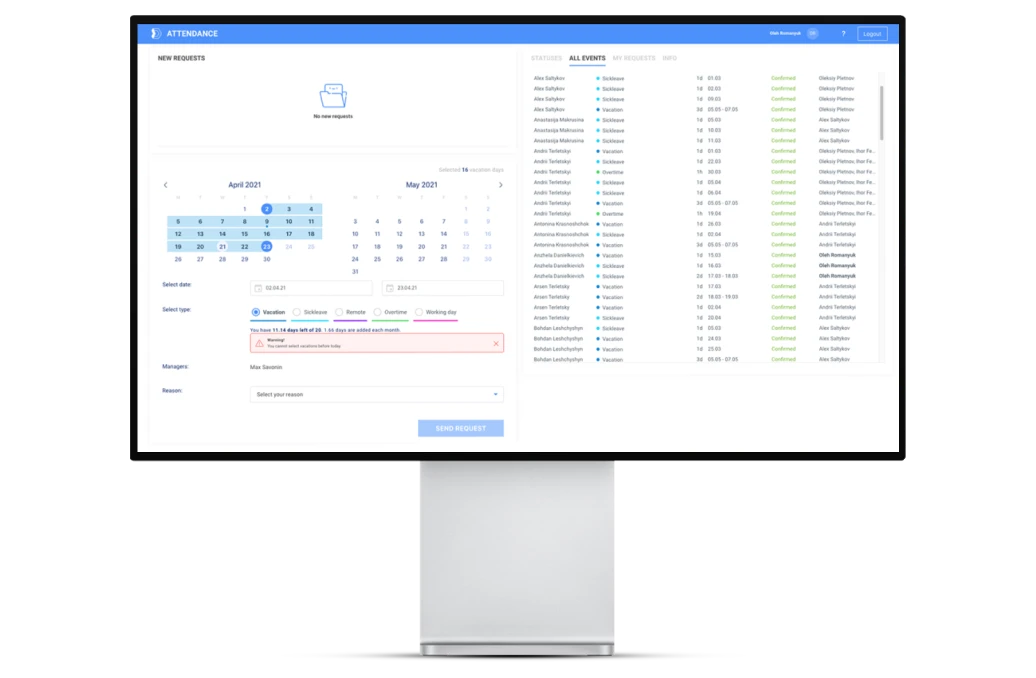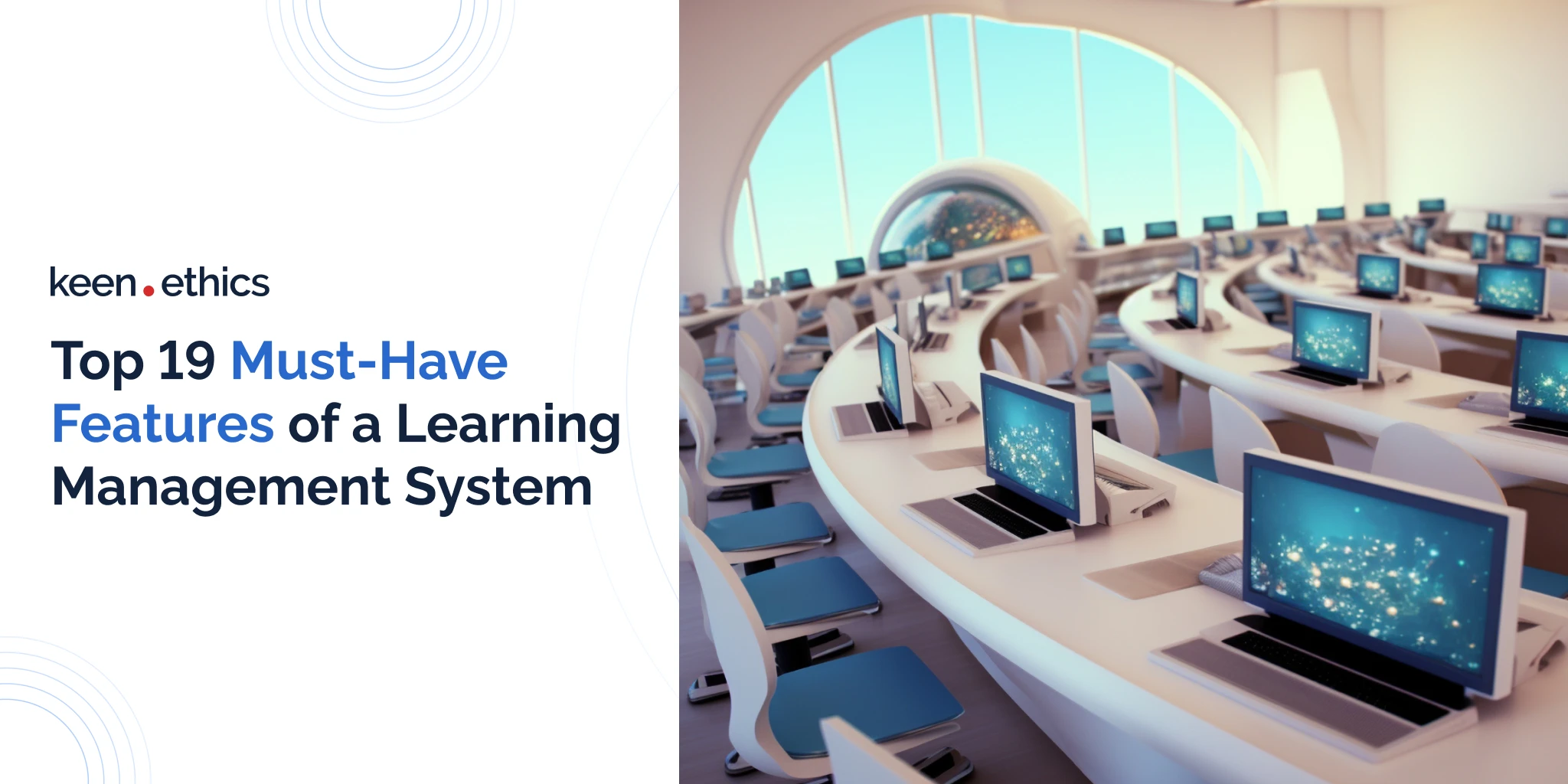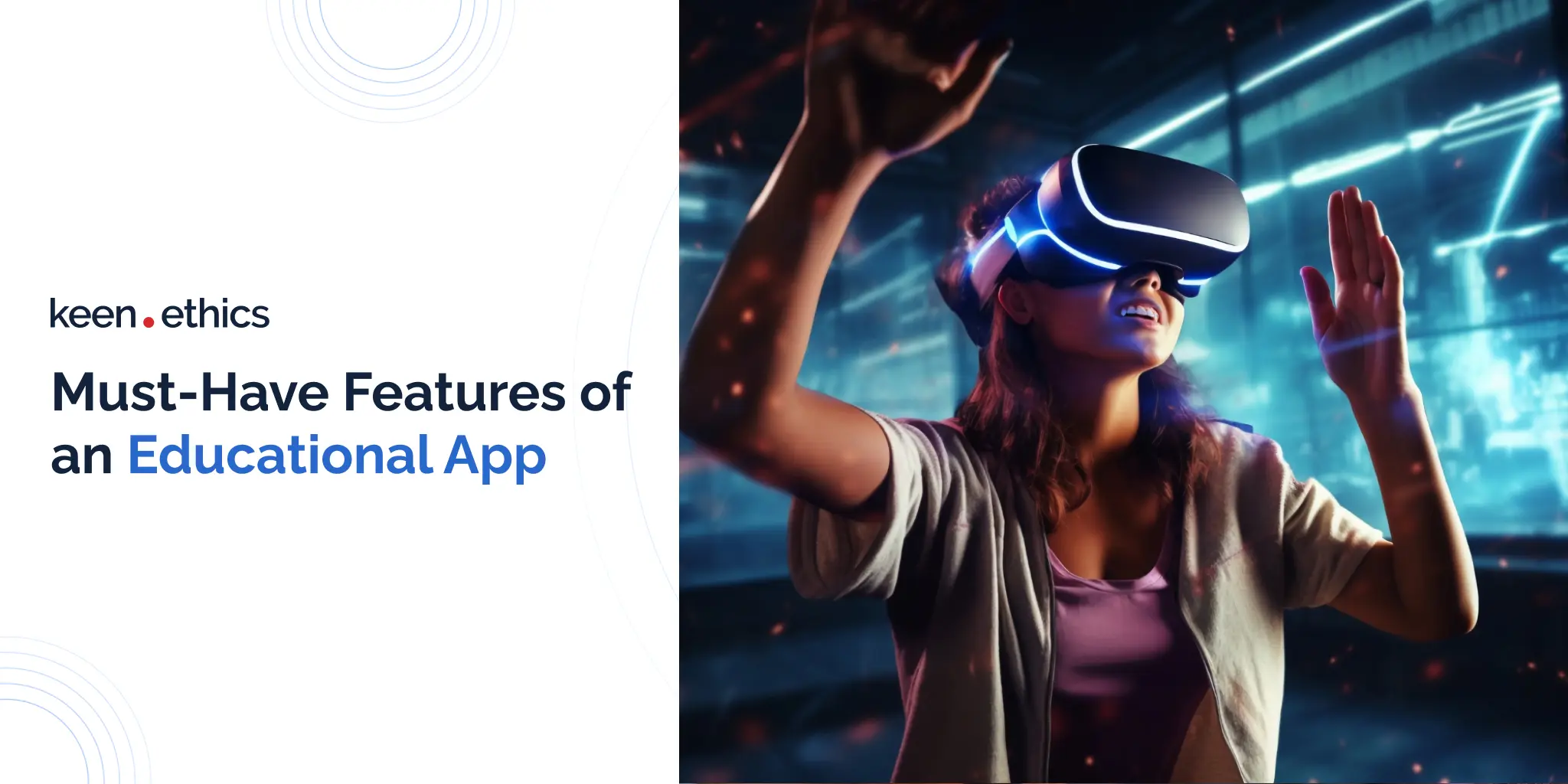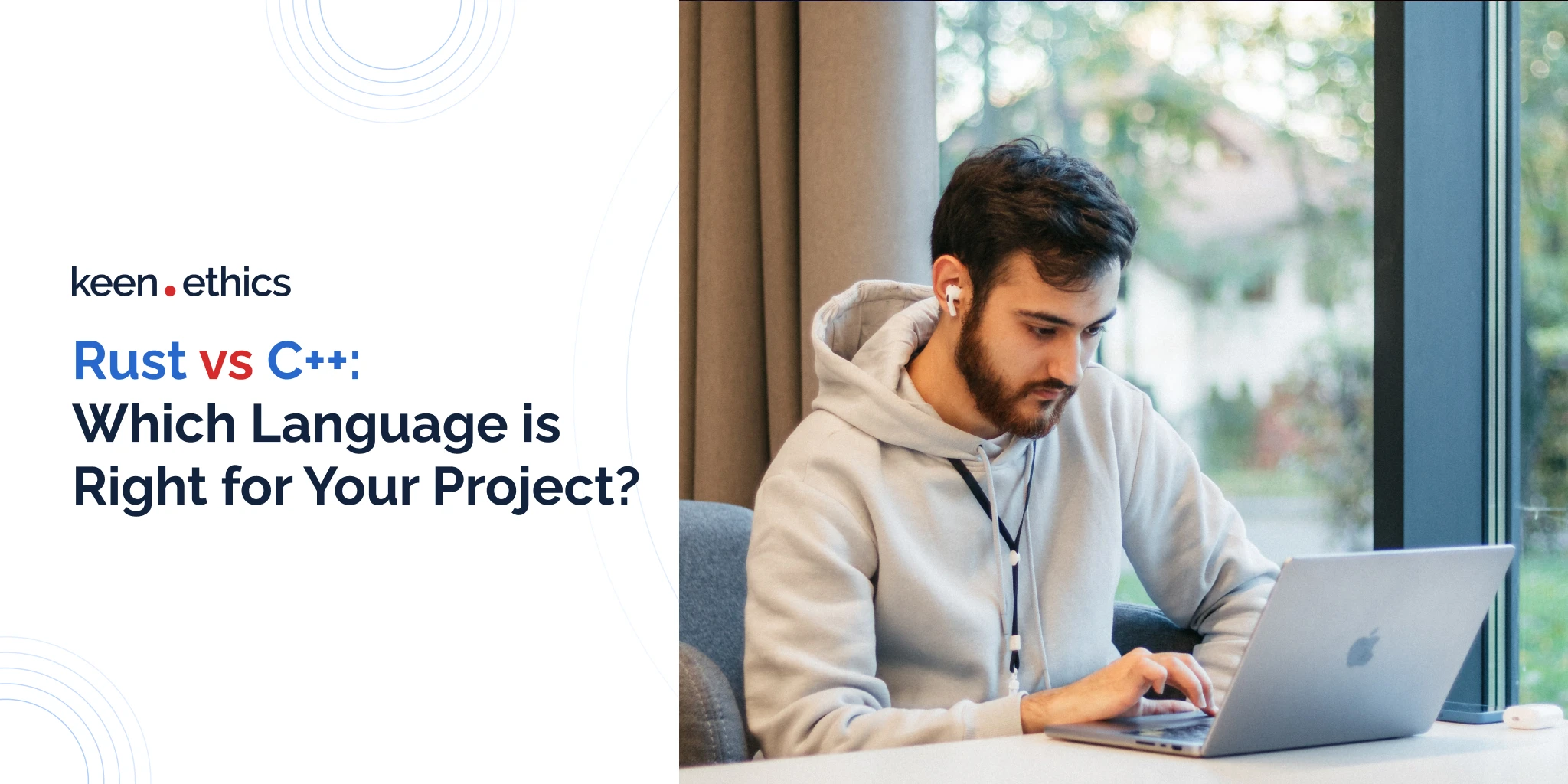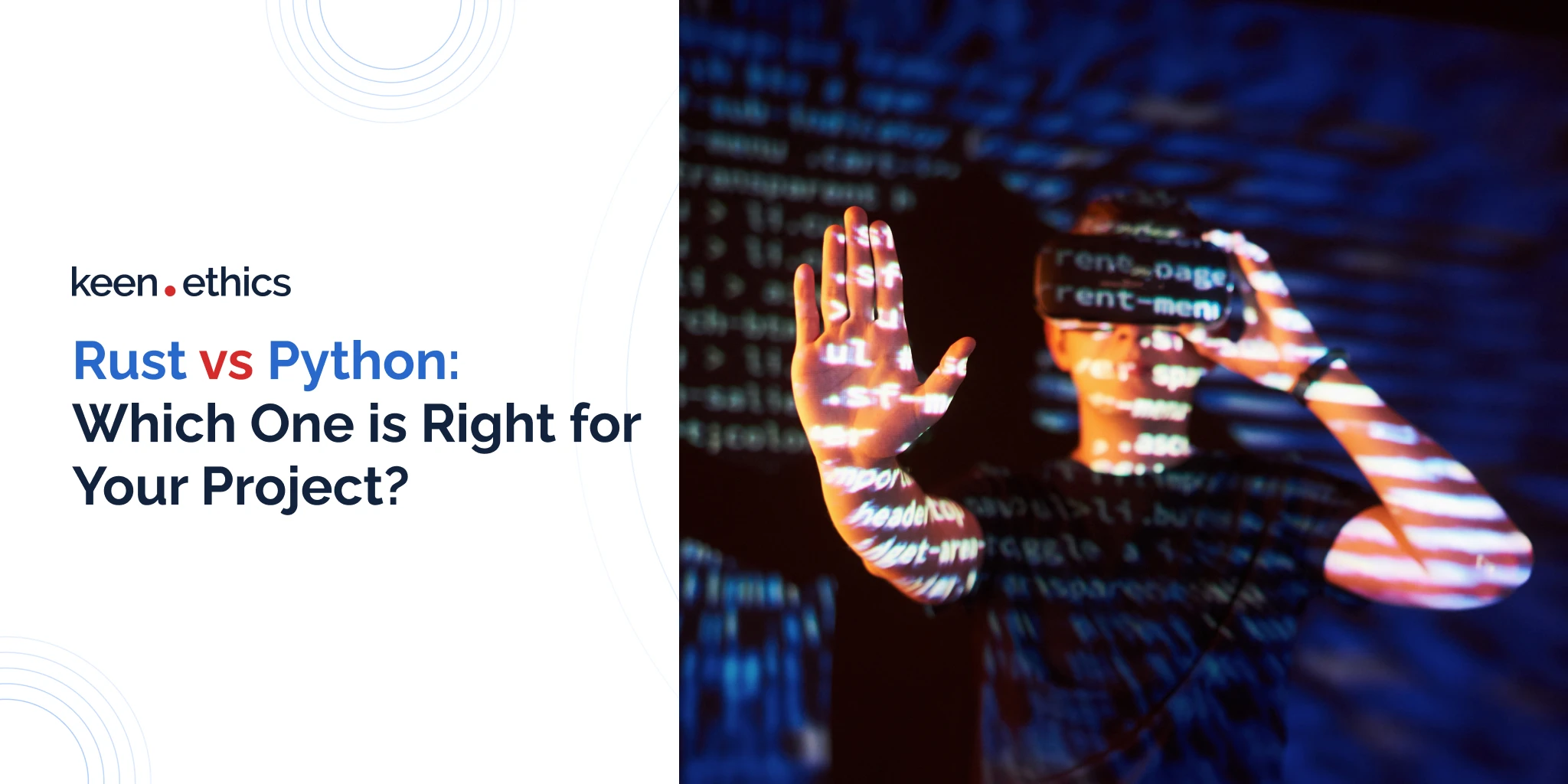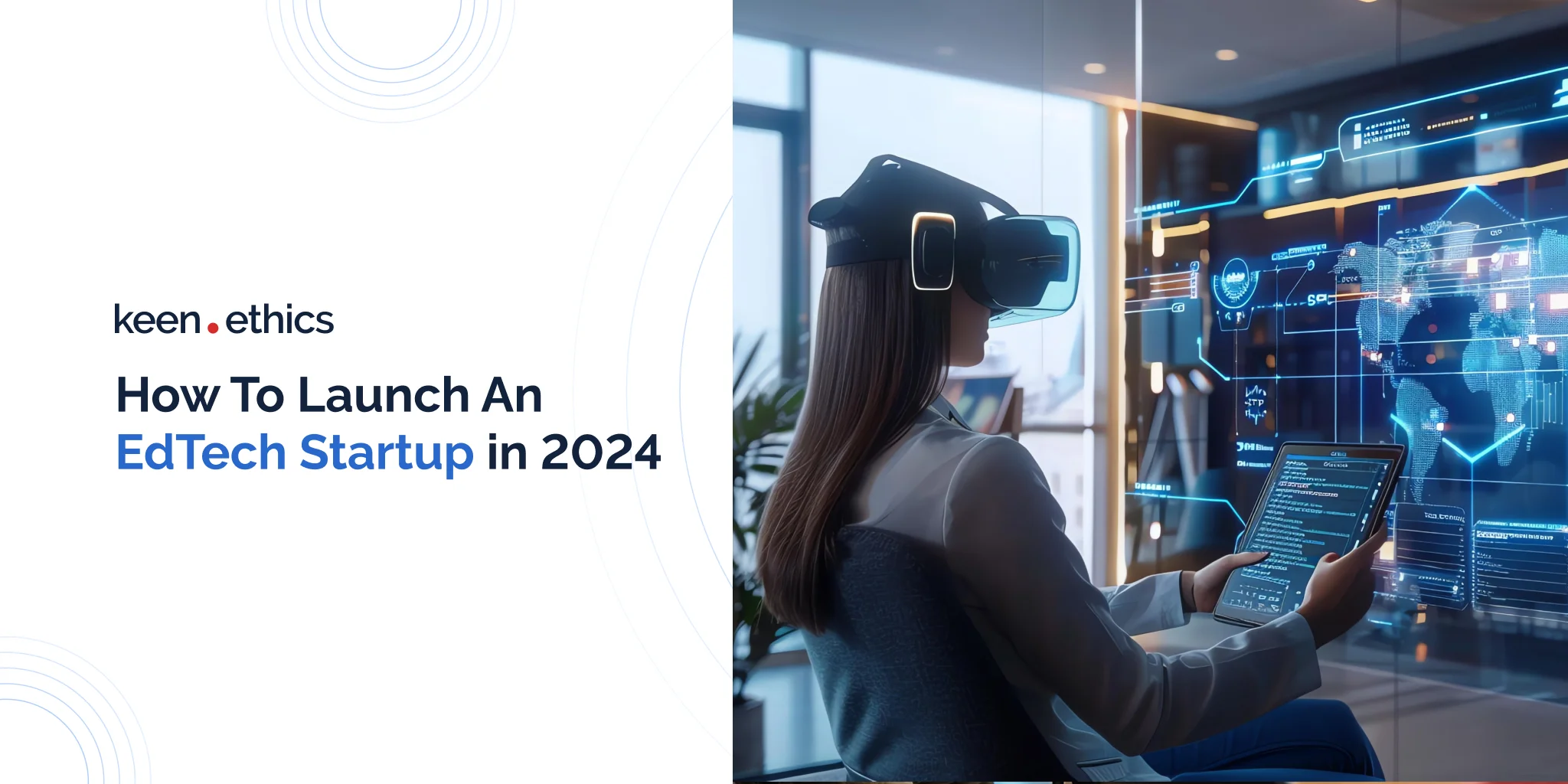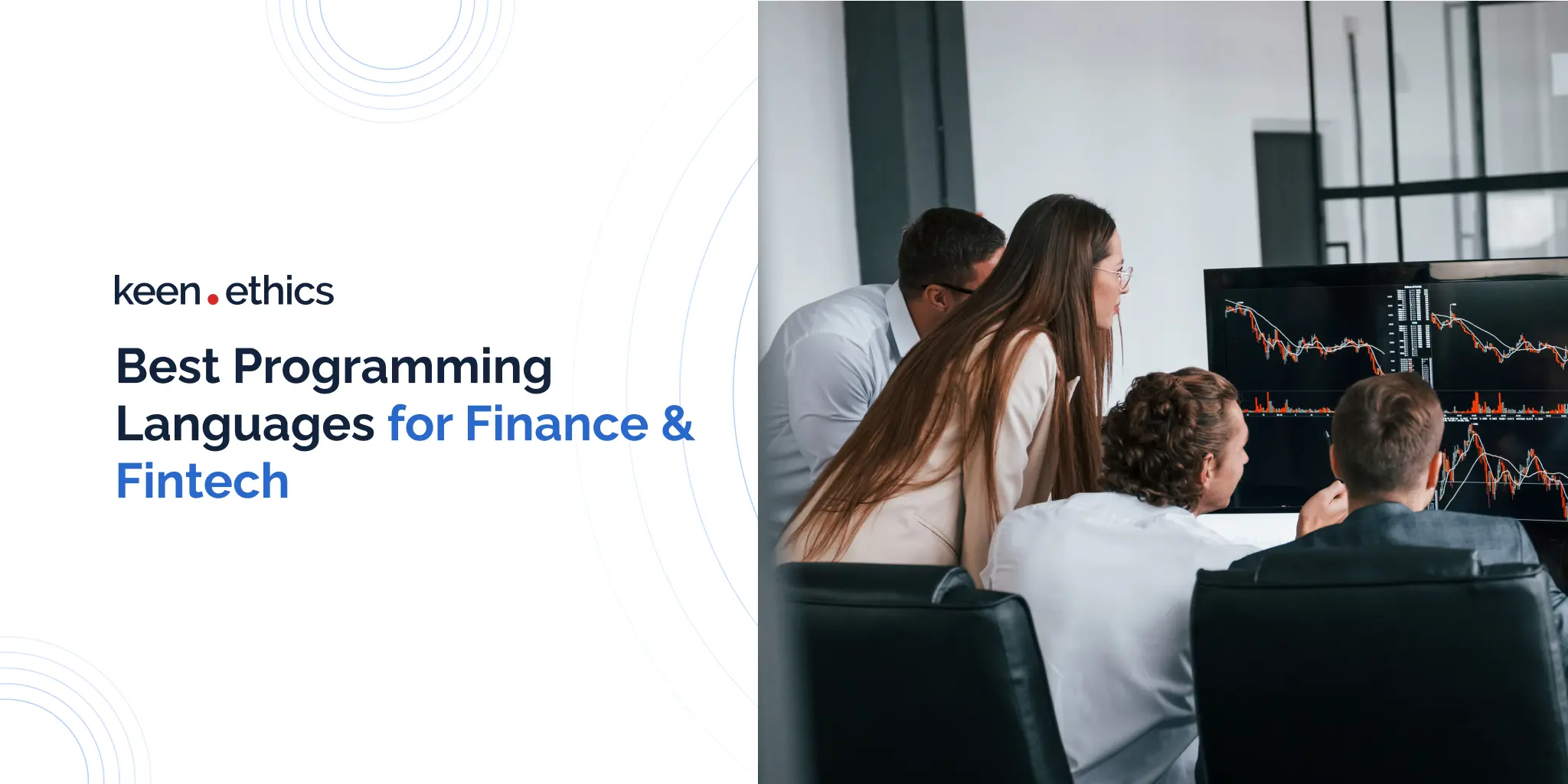Modern eLearning is among the most promising fields in IT. Why? The reason is simple: it’s currently one of the key benefactors of cutting-edge technology. eLearning trends include an intersection of machine learning, AI, microlearning, and Big Data. Consequently, the potential scope for investments is tremendous in this sector. There are many undiscovered applications of various technologies that can revolutionize learning. The core goal of this article is to help the readers understand how those trends interact and what to do with them.
The Current Growth of the eLearning Market
Let’s review some of the current eLearning Trends in terms of their overall performance. As the available information indicates, the 2020 market size for edtech was at the level of approximately 200 billion US dollars. However, this market trend is highly likely to change by 2030. In this respect, the expected market size for the edtech products will reach 800 billion dollars. All in all, the edtech market is likely to grow at the speed of 17.5% per year. Therefore, the future of the presented field is very bright. Thus, investments in this sector are also likely to be very significant in the upcoming years.
Why Is It Vital to Understand eLearning Trends?
It’s highly vital to understand the core eLearning trends in the modern markets for online courses. The reason is rather simple: it’s very responsive to the appearance of novel technologies, such as adaptive learning. Hence, many of the modern trends are likely to have a tremendous impact on the sector. The CAGR provided above isn’t a final number. With the appearance of AI and VR proliferation, we expect the figures presented above to grow even further. For this reason, understanding why this market is growing at such a significant speed and the potential modifiers that can speed up the already tremendous growth is essential for education-oriented investments.
What Are the Top 10 eLearning Trends Right Now?

1. ML and AI
The first and most vital trend in eLearning undoubtedly stems from the intersection of Machine learning (ML) and Artificial Intelligence (AI). Machine learning is the concept that signifies the ability of modern analytics tools to create complex algorithms that are capable of very accurate predictions. In practice, this means that modern personal computers can analyze tremendous amounts of information and then create apps that are capable of exhibiting human-like behavior. These apps are what we call AI these days. For example, ChatGPT is an application of a machine learning AI algorithm GPT to human-machine interfaces. The creators of the solution fed more than 45 terabytes of information to the underlying model for it to work.
This technology has a tremendous impact on the education sector. Today, education services represent a major part of ChatGPT subscription revenue. What are those technologies capable of that makes them so popular among students? Above all, they’re notable for their capability to create custom, targeted answers to student questions. An AI can predict answers to the questions in a way that appears genuinely human-like. As a result, this technology is perfect for promoting inquiry-based learning, one of the most popular recent methodological additions to the theory of teaching. AI is also great at simplifying teacher tasks. In this respect, one can use it to generate questions and exercises for tests, using the technology as a major time-saving innovation.
2. Small learning sessions
Many people don’t have much time for learning: they’re overloaded by a combination of work and family-related tasks. At the same time, those individuals may need to learn a lot to, for example, guarantee proper promotions at their workplaces. In this light, a tremendous market oriented around time deficits is arising. Microlearning or small learning sessions are among the best learning styles that can help guarantee learner engagement in such scenarios.
What does it entail? Typically, microlearning involves lessons that take no more than 5 to 15 minutes per day. During this time, a learner should have the capability to find out information about new theory and practice it. A good example of microlearning is presented by services such as Duolingo and Memrise. Both of them are focused on small learning sessions for people who want to study some languages. Duolingo is notable for offering combined lessons in grammar and vocabulary. In turn, Memrise is more focused on words due to its interactive multimodal flashcard method. What unifies both apps is their focus on the short sessions that allow people who face major time shortages in their lives to still study.
3. Mobile-based approaches
One of the core trends in the modern world is the spread of mobile technologies. These days, more and more people have access to mobile platforms. Smartphones with quite impressive characteristics that are more than sufficient for the majority of everyday tasks are now being sold for prices between 100 and 200 dollars. This means that even individuals in some relatively impoverished countries can have access to online learning platforms and various types of educational content. This factor allows us to highlight the first advantage of mobile learning. The advantage in question is its accessibility.
Mobile learning has some other core advantages. Above all, it’s notable for its flexibility. One can learn at any location and time with the use of smartphones. More importantly, they’re also notable for simple controls. It’s very easy to create high-quality, intuitive apps using modern development tools. Hence, mobile platforms are likely to give billions of people access to core elearning industry trends.
4. AR/VR
Augmented Reality (AR) and Virtual Reality (VR) are also a big trend in modern education. In this respect, they’re notable for their ability to enhance multimodal learning, which will be mentioned below. VR and AR combine two types of education inputs, video and audio, in three-dimensional environments. In this way, they give every teacher the ability to create a unique learning journey for their students.
Let’s review an example of how VR/AR can be useful in classroom scenarios. Imagine that you have to teach some geometrical concepts to a student. For example, there may be a need to explain how cubes function. Many students find equations describing the laws of their functioning very difficult. By visualizing them in a 3D environment, you can avoid this problem. The presented technology will enable you to showcase cubes and formulas governing their creation from several standpoints. As a result, the combination of several modes of learning will enable every student to find an optimal learning path for structuring the presented information.
5. Cohort-oriented courses

Cohort-based learning is among the newer approaches in learning that greatly benefit from the current elearning trends. It’s a group-learning method that puts student groups, or cohorts, into similar learning conditions (for instance, some form of a course). How does this approach differ from traditional learning? Instead of emphasizing individual work, it focuses on group tasks. For example, a coding boot camp can split all students into several groups that have to deliver some project by the end of all learning sessions.
Ultimately, such group work is vital for improving the learning outcomes of all involved individuals. These training programs push students to get information for improving their knowledge not only from teachers but also from fellow students. In order to pass a course, every person has to learn from their peers and find a way to interact with them properly. This approach is a perfect emulation of the real work conditions. It’s not enough to be a coding expert, for example. One should also be able to communicate with their colleagues efficiently. Consequently, a cohort-based course creates a social learning environment that is highly useful for students due to its capability to emulate the real working conditions on the market.
6. Distance and hybrid learning
After the COVID-19 pandemic, it became obvious that distance and hybrid learning can ultimately be highly efficient at delivering high-quality learning opportunities. For example, many companies found out that their corporate training did not necessitate a personal presence in company offices during the 2020 crisis. More importantly, distance and hybrid training and learning create massive advantages for all involved individuals. For example, they allow people to learn regardless of their residence location. Modern hybrid and distance learning frameworks also reduce or completely remove time constraints.
A common problem of traditional learning systems is that they create quite significant problems with equal access to learning materials. For example, you have to access a particular education institution if you want to try out its courses in a traditional system. Why is this so problematic? The best learning materials are concentrated in a few locations, such as Ivy League colleges. Modern platforms such as edX or Khan Academy are notable for solving this problem. As the examples of courses such as CS50 indicate, students can, in numerous instances, access elite courses from any country and get Harvard-level knowledge even in Africa or South Asia. Considering the current global problems concerning inequality, this information means that the technology doesn’t only represent a future of education. It may have a major macroeconomic significance as one of the core tools for removing educational inequalities.
7. Multimodal learning
A major misconception about learning these days is that students depend on various styles in the learning process. Even though the idea of kinesthetic or audial learners is very popular, it has no foundation in modern academic literature. In short, it’s a form of an educational myth, along with the belief that humans use only 5% of their brain capacity. In reality, humans learn through multimodal approaches. This means that they need an input of information from several sources to succeed. A common way to illustrate this concept is mathematics. Modern studies of mathematics would have been impossible without visualization. No person is capable of learning math by simply listening to some formula. One genuinely needs to see math to understand it.
The modern digital environment is a perfect framework for achieving this goal. For example, a corporate training website can easily involve a combination of audio, video, and text. As a result, it will maximize the learning outcomes for the students by allowing them to see various learning problems from different perspectives. Our knowledge depends on the quality of the connections we make between different types of information. In this regard, a potent choice is to create training programs that can explain certain aspects of work or, for instance, mathematics from several standpoints, allowing every student to structure knowledge in the way they, and not anyone else, find efficient.
8. Game-based learning
A big problem with initial elearning experiences lay in their adherence to rather traditional structures. These traditional structures involve course-oriented content with a definite system of assessments. In many ways, this system of learning is behind the major successes of the modern industrial era. It’s a standard of education that managed to withstand the test of time.
What is its problem, however? In our opinion, the core problem of this approach is in rather significant levels of stress that it’s capable of producing. Many people around the world dislike traditional learning because it’s associated with major effort and time expenditures. Learning, in many cases, is highly stressful for all involved individuals.
As a result, there’s a need for an alternative to this traditional approach. In this regard, the elearning trends intersect with major tendencies in the video game market. Modern video games have many casual formats that integrate perfectly with all forms of learning. The first example of such a casual approach is the role-playing game genre. In this respect, it’s possible to represent the progress of the students through a game-like format. For instance, their improvements in language learning can be represented through various stats or levels.
Another important approach is the use of scoring and health point systems. For example, Duolingo focuses on user scores and presents user errors as HP losses. In this way, the users get to perceive their errors not as traditional scores but as challenges to overcome. Once AI-powered elearning platforms arise on the market, we’re likely to see even more game-based learning scenarios of this type.
9. Immersion-centric case study learning

Immersion-centric learning is also playing a vital role in the current transformation of education. This approach primarily focuses on creating learning scenarios that are as realistic as possible. Their goal is to immerse the student in the life-like simulation of a certain learning situation. For example, immersion-based learning for healthcare students would involve some form of a simulation focusing on surgery or standard medical procedures for core emergencies.
Modern elearning solutions are notable for enabling such technologies. For example, virtual reality may be used to create unique learning opportunities for individual learners. In this regard, one can use it to simulate all types of procedures concerning different forms of work. For example, packaging workers can easily use those platforms to learn how to work in a packaging factory. VR isn’t the only tool for promoting such immersive learning experiences. In online education, one may focus on video conferencing or even chats to role-play complex scenarios. For instance, many teachers create complex case studies for emergencies and then assign different roles to students. Their goal is to outline their actions in a written form on various forums. What is essential, in this case, is to create a realistic emulation of certain scenarios.
10. Big Data integration
Big Data is also among the core elearning trends in the modern world. This technology involves the collection of large data sets and their later analysis, aimed at establishing new data based on the presented observations. What are some examples of Big Data application in the modern world? Let’s imagine you have a class of English students. Big Data tools can help you analyze all input about those students, including their concentration time per page of content. In this way, it’s possible to later arrive at some major conclusions about their progress during the study sessions. For example, you may find a causal connection between focus time and student performance. Using this information, you’ll be able to devise more engaging exercises or advise the parents of the students to lower their screen time to expand their attention spans.
Why is Big Data so applicable to education these days? The reason is simple. We have easily accessible tools and, more importantly, enough sources of information due to the growth of the elearning market. A significant part of learning occurs through various apps these days. Therefore, you have an opportunity to use those apps to maximize data collection. Even textbooks are often full of high-quality tools aimed at measuring student efficiency. In short, our learning is now focused on a virtual environment, where the act of collecting student information is easy to achieve.
What’s the Combined Effect of Those Innovations?
In our opinion, the combined effect of those innovations on the education system is genuinely revolutionary. Why is this the case? Firstly, there’s a transition towards inquiry-based models in modern education. They offer a learning experience that is highly personalized because it focuses on individual student questions that are oriented around their unique networks of knowledge.
Secondly, learning is becoming increasingly multimodal. In this light, employee training and school education are likely to change in a major way, too. Now, every student has an opportunity to engage in the so-called interleaving. This means that they can see various learning problems from multiple perspectives. For instance, a virtual reality tool can help turn mathematical equations into easy-to-understand visualizations. Combined with an inquiry-based approach from AI, multimodality and VR can transform education into a truly personalized e-Learning experience for the majority of learners.
Other changes are likely to enhance this model even further. Immersive learning makes learning scenarios more elaborate, helping students see various learning problems from multiple perspectives. In turn, gamification is a perfect way to reduce student stress, which, regrettably, remains a major problem despite the big elearning technology trends.
Potential Limitations of Adopting Those Trends

Still, there are some major limitations concerning the adoption of the presented trends in education and work training scenarios:
1) Methodological adaptation: the first major challenge is the ability of the teachers and instructors to adapt their methodologies to core trends in e-learning. In this respect, the core concern is adapting to the new technologies altogether. Several sessions of trial-and-error approaches may be necessary to find the best ways to use this technology.
2) Technology training: the problem above includes a perfect scenario in which everyone clearly understands how to use this or that technology. However, elearning trends are notable for their complexity. This means that using them isn’t as simple as it may seem. For example, AI technologies are accessible primarily to younger generations. They may present major challenges for older teachers due to the somewhat arcane and subtle behaviors of this technology.
3) Budget constraints: some of the technologies mentioned above are costly these days. This information means that many schools and firms may not have enough resources to access them. For example, Big Data analytics tools are notable for being expensive. It’s not even so problematic to analyze information. What’s truly difficult is data collection. Therefore, maximal positive impacts from elearning trends are possible only in the cases when you have enough money to cover the core innovations.
Conclusion
To summarize, modern eLearning trends push the edtech market towards even greater growth in the upcoming years through the focus on personalized learning experience. AI, for example, can completely transform language learning and mathematics education by improving student engagement. In turn, VR and AR are perfect technologies for trades or healthcare. Do you want to develop your custom e-Learning solutions for education? Keenethics can help you in this regard. Our developers know the core elearning software trends, having more than 8 years of experience in developing such solutions. Consequently, Keenethics is ready to help you with all types of elearning apps, including Learning Management Systems and AI learning solutions.
Keenethics is here to help!
 Search
Search




